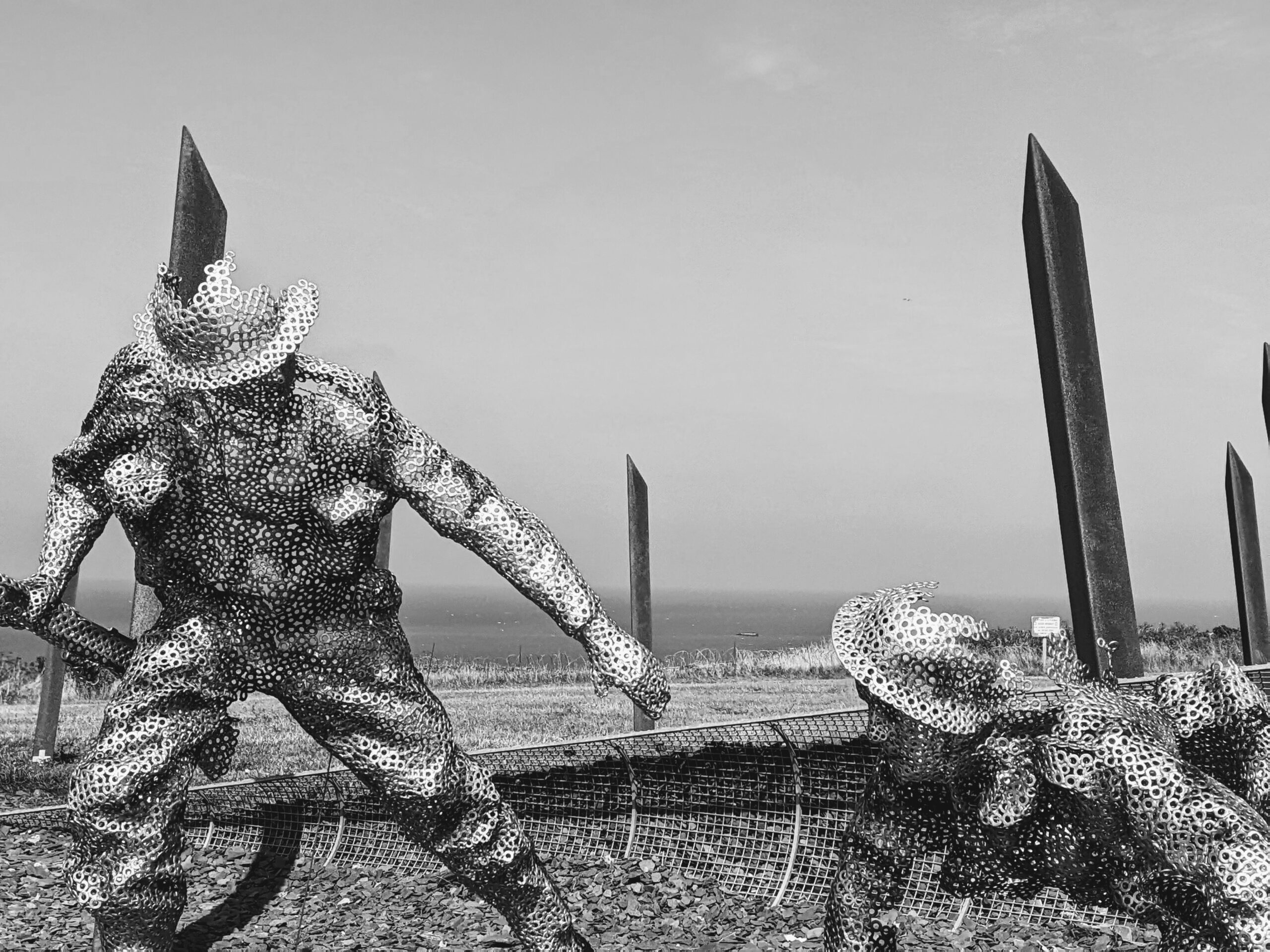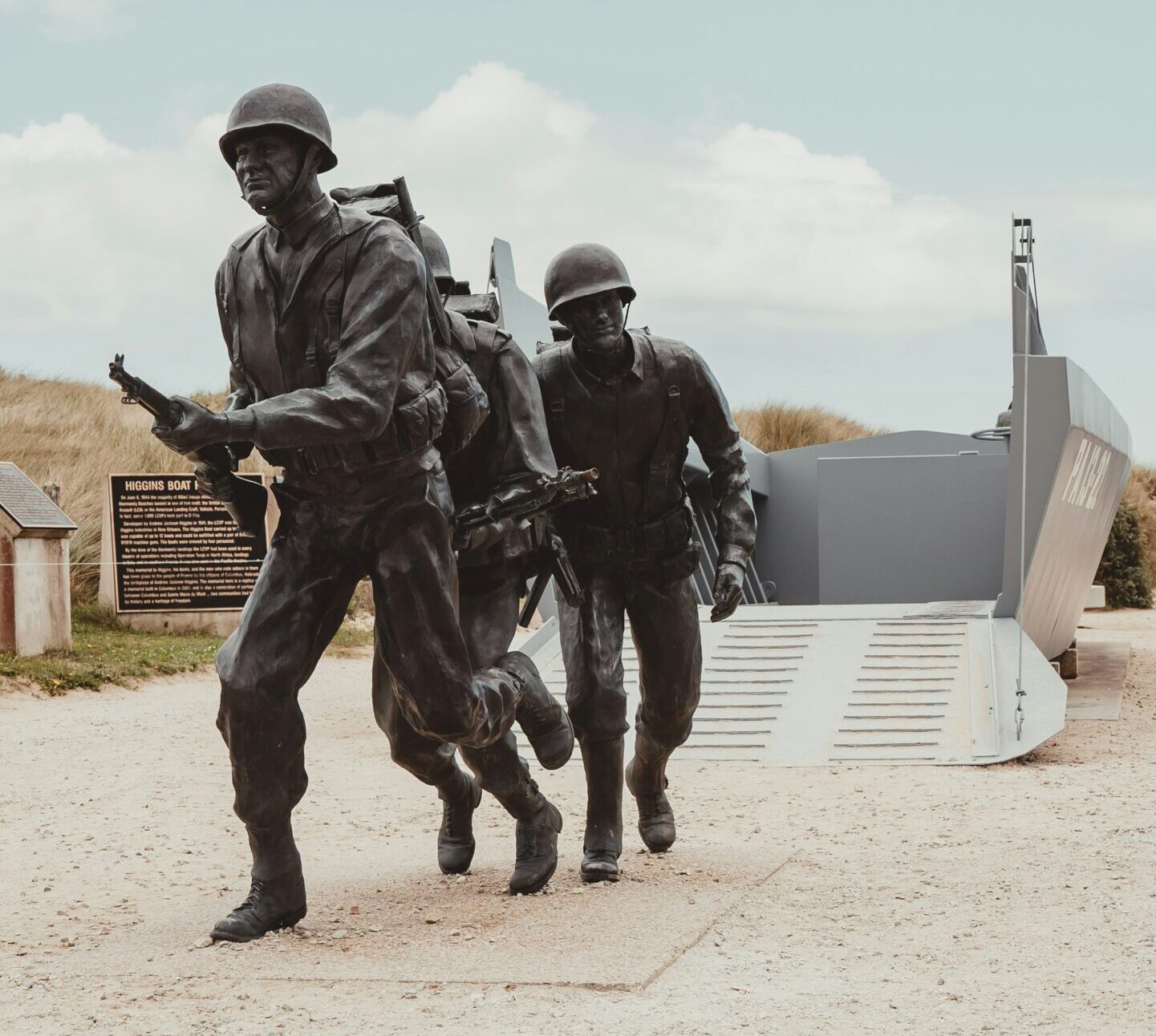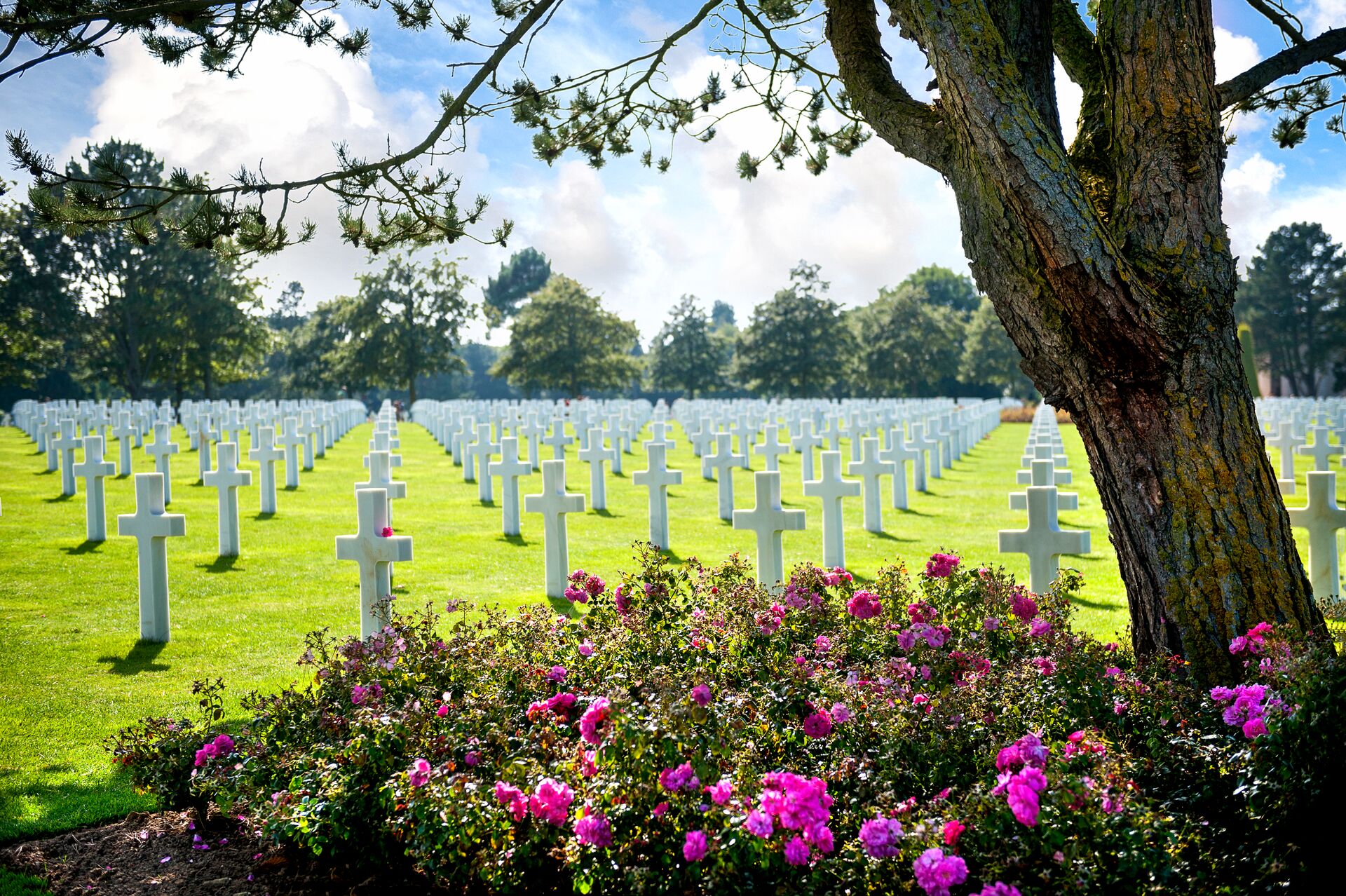D-Day at 80: Celebrating the Strategy That Saved Europe
On June 6th 1944, more than 160,000 troops from the USA, Canada, Australia, Britain and other Allied nations swarmed the beaches of Germany-occupied northern France. Operation Overlord, or D-Day – as it has come to be more commonly known as – was a pivotal moment in the Second World War, marking the start of Allied operations which would eventually liberate Western Europe, defeat Nazi Germany and, ultimately, end the war.
We look back at the Allied efforts involved in this momentous operation, the events leading up to it, and how to celebrate D-Day’s 80th anniversary in Normandy itself.
What was D-Day?
Operation Overlord was the codename for the Battle of Normandy, which took place on D-Day. The operation was to become the largest amphibious invasion in history, launching a combined naval, air and land assault on Nazi-occupied France. This marked the beginning of a lengthy campaign in north-west Europe – and it was the beginning of the end of German occupation.
Just after midnight, early on 6th June 1944, Allied forces parachuted into drop zones across northern France and ground troops then landed across five assault beaches. By the end of the day, the Allies had established a foothold along the coast and could begin their advance into France.

The ‘D’ in D-Day just stands for ‘day’; the term ‘D-Day’ was commonly used throughout the war to describe the first day of any large military operation.
The invasion was conducted in two main phases – an airborne assault and amphibious landings. Shortly after midnight on 6 June, over 18,000 Allied paratroopers were dropped into the invasion area to provide tactical support for infantry divisions on the beaches. Allied air forces flew over 14,000 sorties in support of the landings and, having secured air supremacy prior to the invasion, many of these flights were unchallenged by the Luftwaffe.
Though the Battle of Normandy began on D-Day, it didn’t finish there. It continued until the end of August 1944, and the liberation of Paris on 25 August 1944 is often marked as the end point of the Battle of Normandy.
But D-Day wasn’t a standalone event. Its success was prefaced by combined Allied efforts throughout many years before June 6th 1944. Previous failures at Dieppe in France in August 1942, and Anzio in Italy in January 1944 gave Allied commanders valuable insight into how to plan D-Day successfully.
A strategic bombing campaign, which began in 1942, forced Germany to redistribute soldiers and resources away from Normandy to home defense. This allowed the Allies to secure air superiority, carry out aerial reconnaissance, and gain essential intelligence on the weakened German coastal defenses.
Further reading: Why a Visit to the Somme Battlefields Will Still Move You
DISCOVER MORE ON
D-Day in numbers
- More than 150,000 troops
- Over 18,00 paratroopers
- Over 14,000 planes (or sorties)
- Nearly 7,000 naval vessels
- Across five beaches in Normandy: Utah, Omaha, Gold, Juno and Sword
By 1944, over 2 million troops from over 12 countries were in Britain in preparation for the invasion. On D-Day, Allied forces consisted primarily of American, British and Canadian troops but also included Australian, Belgian, Czech, Dutch, French, Greek, New Zealand, Norwegian, Rhodesian and Polish naval, air or ground support.
Nearly 7,000 naval vessels, including battleships, destroyers, minesweepers, escorts and assault craft were involved in the naval component of Operation Overlord, called Operation Neptune. Naval forces were responsible for escorting and landing over 132,000 ground troops on the beaches. They also carried out bombardments on German coastal defenses before and during the landings and provided artillery support for the invading troops.
War stories: The Legend of the Golden Virgin, France’s Most Important Statue
Save up to $3,000* per couple on your first Premium Tour
Plus receive latest offers, travel inspiration, and discover how your travels will make a positive impact. Together, WE MAKE TRAVEL MATTER®. Subscribe NowCelebrating D-Day’s 80th anniversary in Normandy
As this year marks the 80th anniversary of D-Day and the Battle of Normandy, there are some major celebrations taking place in Normandy to pay tribute to the veterans who lost their lives.
From June 1st-6th you can get stuck into the D-Day Festival Normandy. Taking place across the entire coastline of D-Day and the Battle of Normandy, from Pegasus Bridge to Sainte-Mère-Eglise, and of course the five landing beaches: Utah Beach, Omaha Beach, Gold Beach, Juno Beach and Sword Beach. With over 100 events, you can expect parachuting, parades, concerts, historical re-enactments, fireworks, exhibitions, projections, and more.
This takes place ahead of the official international ceremony on June 6th on Omaha Beach. This is invitation-only where heads of state, veterans and officials will attend. If you are planning on marking the 80th anniversary of D-Day, make sure to remember that many beaches will be cordoned off with no visitor access on this day.

Operation Overlord was originally planned for June 5th, but the British weather was too bad for the ships to set sail and was postponed until the next day.
Visit Normandy with Insight Vacations
The 80th anniversary of D-Day is just one reason to visit Normandy this year. On our Normandy, Brittany & The Loire Valley Tour, an 8-day guided tour taking you through the sights, sounds, and history of France. Among the lush Loire Valley and sparkling lights of Paris, you’ll spend two nights in Normandy where you’ll meet a Local Expert and visit key sights to learn all about the history of this important place – here’s a snapshot of what you’ll experience.
Visit the American Military Cemetery with an expert
With a Local Expert, spend some reflective moments at the American Military Cemetery of Saint-Laurent. Established by the U.S. First Army on June 8th 1944, it was the first American cemetery on European soil in World War II.
Views from the Pointe du Hoc Ranger Memorial
Follow the route of the the U.S. 2nd and 5th Ranger Battalions, and visit the bunkers and the Ranger Memorial, located on La Pointe du Hoc, a 35-meter cliff overlooking Omaha Beach and the English Channel.

D-Day forces included soldier from the UK, USA, Canada, Australia, Belgium, Czechoslovakia, France, Greece, the Netherlands, New Zealand, Norway, and Poland.
Insight Choice: D-Day Museum in Arromanches
As part of Insight Choice, you can choose between two exceptional experiences. Choice 1: Visit the D-Day Museum in Arromanches and see the remnants of the artificial port in the bay. First opened in 1954, the museum was completely rebuilt, expanded, and reopened in 2023.
Insight Choice: Visit to Bayeux
Choice 2: Visit Bayeux, the first town to be liberated after D-Day. At the Bayeux Tapestry Museum, learn about the epic story of William, Duke of Normandy becoming the King of England.
Discover our Normandy, Brittany & The Loire Valley Tour and learn all about the history of D-Day – and so much more.

LIKED THIS POST? SHARE WITH YOUR COMMUNITY



